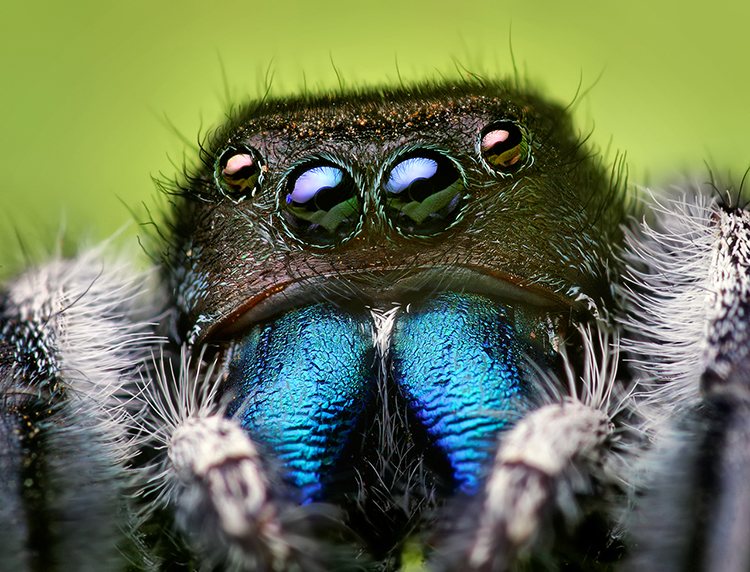Proving there is a spider sense
Binghamton’s Ron Miles, Anechoic Chamber play key roles in proving spiders can “hear”

There really is a “spider sense.”
With help from Binghamton University’s Ron Miles, researchers found that despite not having ears - or even ear drums - jumping spiders can perceive airborne sound.
Paul Shamble and Gil Menda, both in the Department of Neurobiology and Behavior at Cornell University, were co-first authors of the study “Airborne Acoustic Perception by a Jumping Spider,” in the current issue of Current Biology coming out in early November. Cornell’s James Golden, Eyal Nitzany, Katherine Walden, Tsevi Beatus, Itai Cohen, and Ronald Hoy are all authors of the paper along with Miles and Damian Elias from the University of California, Berkeley.
Miles is the chair of the Mechanical Engineering Department within the Thomas J. Watson School of Engineering and Applied Science.
The family of jumping spiders include about 5,800 species, 13 percent of all spider species, that live all over the world. In general, the family is known to perceive the world through sharp eyesight and ability to sense vibrations - such as a struggling fly in a web - instead of hearing.
It was previously thought jumping spiders were deaf to airborne sounds.
In the experiments, researchers implanted electrodes in sound-sensing areas of a spider’s brain and placed the animal in a metal box. Scientists then played sounds at the same frequency of the buzz created by the predatory Mud Dauber wasp in various locations around the box. Consistently, spiders froze in response to the threat - a behavior observed in the wild - and electrodes recorded spikes in brain activity as spiders, “listened,” for the predator.
“I was involved in showing that the experimental setup presented the spider with only airborne sound rather than vibrations through the ground. Spiders are known to be incredibly good at detecting very subtle motion of the surface they are on,” Miles said. “We had to make sure that the vibrations were too small to influence the results and the anechoic chamber, one of the quietest places on Earth, was the perfect place to test that. We demonstrated this using measurements in our chamber and also provided an analytical model of the vibration of the fixture that the spider was placed on when it reacted to sound.”
Spiders had neural responses to sounds between 80–380 Hertz at 65 decibels (normal restaurant conversation) from close distances to 10 feet or more.
Scientists say that more research is needed to figure out how spiders receive sound. It could be, in part, from sensitive hairs on their legs.
